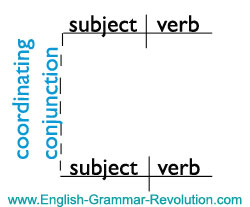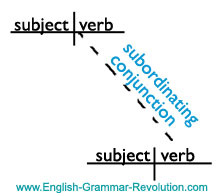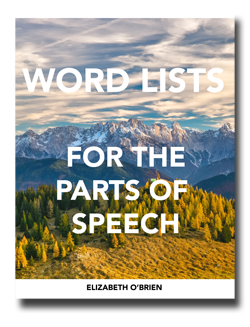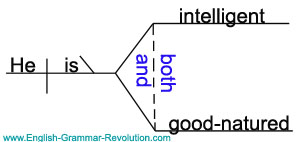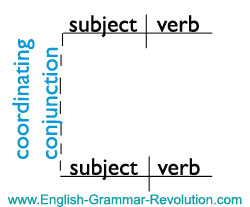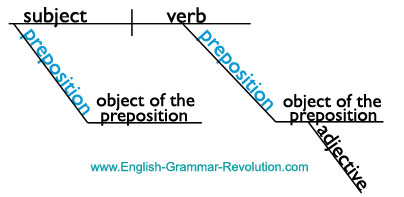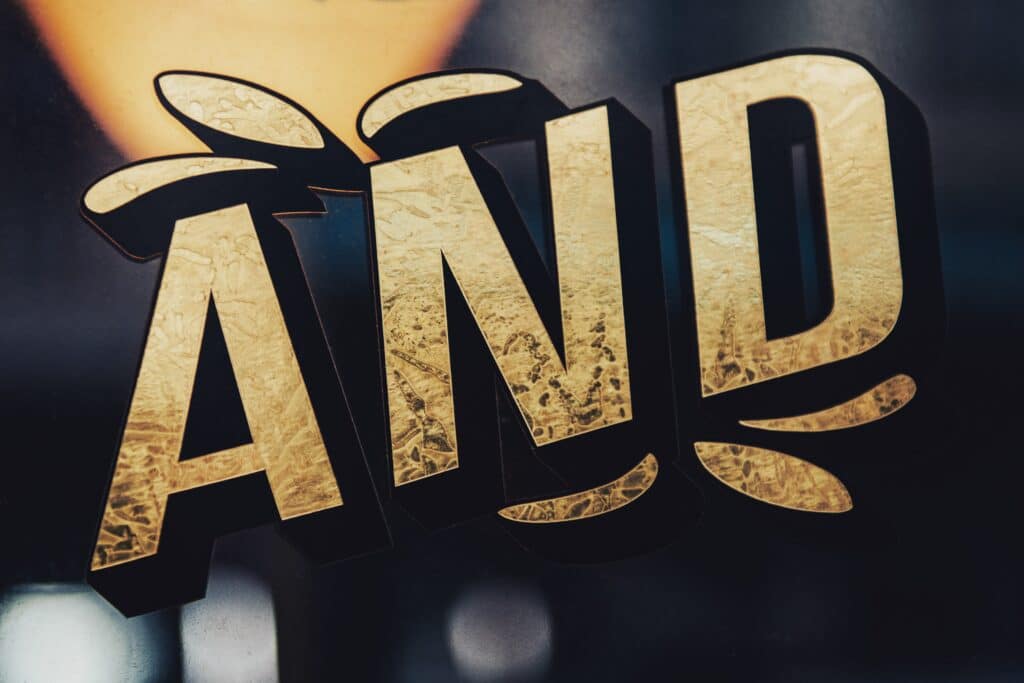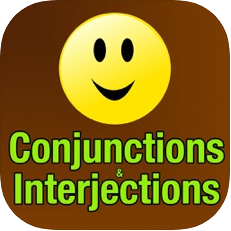Conjunction is one kind of part of speech. It is used to join two or more words, clauses, and sentences. Here we shall explore the word ‘for’ as conjunction.
The word ‘for’ can be used as a preposition or conjunction based on our needs. We can definitely use the word ‘for’ as a conjunction because it helps us to join two sentences together to form a single sentence.
Ex- I cannot teach the students today, for I am ill.
Explanation- Here the word ‘for’ is used to join two sentences i.e. ‘I cannot teach the students today.’ and ‘I am ill.’ and frames a single sentence.
Let us explain more facts about the use of the word ‘for’ as a conjunction.
It is obvious to us that the word ‘for’ can perform the function as conjunction. Here we shall discuss when we can use ‘for’ as conjunction.
We can use the word ‘for’ to explain the reason. We can use the word ‘for’ as conjunction whenever we wish to show any cause.
Ex- Pratap is underweight, for he lacks proper proteins in the food.
Explanation- Here the word ‘for’ is used as a coordinating conjunction. It expresses the reason.
Ex- Ranjan is in a hurry, for he is late to arrive at school.
Explanation- Here it is found that the word ‘for’ is doing the function of joining two principal clauses together and making a single sentence.
Is ‘for’ always a conjunction?
We have already come to know that ‘for’ can act as a conjunction. Now, we will discuss whether ‘for’ is always conjunction.
The word ‘for’ is not always a conjunction. Besides being conjunction the word ‘for’ acts as a preposition. We can use the word ‘for’ as a preposition or as conjunction based on our needs.
When we use it before a noun or a pronoun it works as a preposition and when we use it to connect sentences it becomes conjunction.
Ex- He has been living in Suri for five years.
Explanation- In this sentence, we find that the word ‘for’ is used as a preposition. It refers to the period of time and establishes a relationship with the other parts of the sentence.
Ex- Deep could not go to school yesterday for illness.
Explanation- Here the word ‘for’ is used as a preposition and serves the purpose of reason. It sets up a relationship with the other words of the sentence.
When is ‘for’ not considered as conjunction?
The word ‘for’ does not always function as a conjunction. It works as another part of speech also. Now, we shall see it.
The word ‘for’ is not considered conjunction when it is followed by a noun or a pronoun and establishes a relationship with the other parts of the sentence.
Ex- I shall bring a doll for my little daughter.
Explanation- Here we see that the word works as a conjunction by connecting two sentences together and forming a single sentence.
What kind of conjunction is the word ‘for’?
There are different kinds of conjunctions. These are coordinating conjunction and subordinating conjunction. Here we shall discuss what kind of conjunction the word ‘for’ is.
Conjunction that can join the principal clauses together and makes a single sentence is called a coordinating conjunction. As the word ‘for’ serves this purpose it falls into the category of coordinating conjunction.
Ex- Suchi put some rice under the table, for she wanted to give the cat some food.
Explanation- Suchi put some rice under the table. (principal clause)
She wanted to give the cat some food. (principal clause)
For (coordinating conjunction)
The above two principal clauses are joined together by the word ‘for’ to frame a single sentence. So, the word ‘for’ acts as a coordinating conjunction here.
Why is ‘for’ conjunction?
We have known that ‘for’ is conjunction. Now we shall discuss why the word ‘for’ is a conjunction.
A conjunction joins words, phrases, clauses, and sentences. The word ‘for’ can join the two clauses together and a single complex sentence. So, we can certainly call it conjunction.
Ex- The students are praised, for they are obedient to their teachers.
Explanation- Here the word ‘for’ acts as a conjunction because it joins the two principal clauses together and frames a single sentence.
Examples of ‘for’ as conjunction:
Here we shall get to know the sentences where the word ‘for’ is used as a conjunction.
| Serial number | Examples | Explanations |
| 1. | Don’t disturb Sohini, for she is reading. | In this sentence, we see that the word ‘for’ is used to join two principal clauses to frame a single sentence. |
| 2. | The baby is crying, for it is hungry. | Here it is seen that ‘for’ acts as a coordinating conjunction by joining two sentences together and framing a single sentence. |
| 3. | .I did not come to school, for I was unwell. | Here we see that the word ‘for’ is used as a conjunction. It joins two principal clauses together. |
| 4. | My sister drank some water, for she was thirsty. | In this sentence, it is found that the word ‘for’ joins the two sentences. |
| 5. | .Please help Hori, for he is needy. | This is the example where the word ‘for’ is used to join the two simple sentences together to form a larger sentence. |
| 6. | Sanjana cannot sing, for she feels pain in her throat. | Here, the word ‘for’ is used to join the two sentences. |
| 7. | They could not get on the bus, for they were late. | Here we see that the word ‘for’ joins the two sentences and forms a single sentence. |
| 8. | .I could not complete the article, for the electricity was gone | In this sentence, the word ‘for’ is used to connect the two principal clauses and thus acts as conjunction. |
| 9. | Could you give the man some food, for he is hungry? | Here it is found that the word ‘for’ is used to join the two principal clauses together. |
| 10. | She is clapping her hands, for she is overjoyed to see her mother coming | Here we have found that the word ‘for’ is used to join the two principal clauses together. |
| 11. | The teacher was happy, for the students did all the sums correctly. | Here is the sentence where we see that the word ‘for’ is used to connect two principal clauses together to frame a single sentence. |
| 12 | My grandfather cannot eat hard food, or he has lost his teeth. | The example shows that the word ‘for’ joins the two principal clauses. |
| 13 | We are unable to go out, for it is raining outside. | In this sentence, we see that the word ‘for’ connects the two sentences and frames a single complex sentence. |
| 14. | Rajaji ran out last night, for he heard a loud noise. | This sentence clearly hints that the word ‘for’ acts as a conjunction by joining two principal clauses. |
Conclusion
The detailed discussion on the word ‘for’ as conjunction will definitely be helpful to us. We can use the word ‘for’ as conjunction while framing sentences.
Asked by: Odie Ryan
Score: 4.9/5
(31 votes)
for – for explaining why [more formal and less common than because] He’s overweight, for he eats too many cakes and biscuits.
What are the 10 examples of conjunctions?
Examples of Conjunctions
- I tried to hit the nail but hit my thumb instead.
- I have two goldfish and a cat.
- I’d like a bike for commuting to work.
- You can have peach ice cream or a brownie sundae.
- Neither the black dress northe gray one looks right on me.
- My dad always worked hard so we could afford the things we wanted.
What is a sentence for conjunction?
Coordinating conjunctions like «and,» «nor,» or «so» link equal parts of a sentence, be it words, phrases, or independent clauses. For example: He was late for school, so he took a shortcut. Her favorite colors were purple and red. She doesn’t like coffee, nor does she like tea.
How is for used as a conjunction?
as a preposition (followed by a noun): I bought some flowers for Chloe. Wait there for a while. as a conjunction (connecting two clauses): I told her to leave, for I was very tired. I’ve brought a cup of tea for you.
What is conjunction give 5 examples?
A conjunction is a word that joins words, phrases, clauses, or sentences. e.g., but, and, because, although, yet, since, unless, or, nor, while, where, etc. Examples.
21 related questions found
What are 10 examples interjections?
Here are some more interjections, this time used in the context of an accompanying sentence:
- Ahh, that feels wonderful.
- Alas! I’m lost in the wilderness.
- Bah! That was a total waste of time.
- Bless you! I couldn’t have done it without you.
- It’s time for me to go. Cheerio!
- Congrats! …
- Crikey! …
- Gesundheit!
What are 5 adverbs?
To start, there are five types of adverbs you should familiarize yourself with: adverbs of degree, frequency, manner, place, and time.
…
Adverbs of Manner
- beautifully.
- generously.
- happily.
- neatly.
- patiently.
- softly.
- quickly.
- well.
What are the 7 conjunctions?
The seven coordinating conjunctions are for, and, nor, but, or, yet, and so.
How do you use so conjunction in a sentence?
We use so as a subordinating conjunction to introduce clauses of result or decision:
- I got here late. It was a long journey, so I’m really tired now.
- You are right, of course, so I think we will accept what the bank offers.
- It’s much cheaper with that airline, isn’t it, so I’ll get all the tickets for us with them.
What is conjunction types and examples?
Conjunction is a word that connects or joins clauses, words, phrases together in a sentence. Conjunctions are used to coordinate words in a sentence. “but”, “although”, “while” are some common conjunctions. Three types of conjunctions are Coordinating Conjunctions, Subordinating Conjunctions, Correlative Conjunctions.
How do you explain conjunctions to students?
A conjunction is a part of speech that is used to connect words, phrases, clauses, or sentences. They can be one word or a few words. They glue words, phrases and clauses together and are made to convey two ideas in one sentence.
What are 10 common prepositions?
A preposition usually precedes a noun or a pronoun. Here is a list of commonly used prepositions: above, across, against, along, among, around, at, before, behind, below, beneath, beside, between, by, down, from, in, into, near, of, off, on, to, toward, under, upon, with and within.
What are 10 examples of compound sentences?
10 Compound Sentences in English
- Our car broke down. …
- They spoke to him in English, but she responded in Spanish.
- She goes to the beach, and she takes her cat.
- Although Michael reads novels, Joly reads comics.
- 5.As Alex was arriving to work, he realized he forgot his lunch.
Which conjunctions are always together?
Correlative conjunctions, or paired conjunctions, are sets of conjunctions that are always used together. Like coordinating conjunctions, they join words, phrases, or independent clauses of similar or equal importance and structure. Unlike coordinating conjunctions, they can only join two elements together, no more.
What is so grammar?
So means ‘to that extent’ or ‘that much’. It is often used when we are talking about a high degree of something. I am so tired.
How can I use yet in a sentence?
Yet sentence example
- It was early, yet we were all ready for bed after our long hike. …
- He would often say the exact opposite of what he had said on a previous occasion, yet both would be right. …
- Why, I have not yet had time to settle down! …
- I haven’t seen that movie yet , so don’t tell me how it ends!
What are the 7 correlative conjunctions?
The correlative conjunctions are either...or, neither… nor, both…and, not only…but also, whether…or.
How many conjunction words are there?
This type of conjunction is used to connect items that are grammatically equal: two words, two phrases, or two independent clauses. There are seven coordinating conjunctions in English, and you can remember them using the mnemonic device FANBOYS: for, and, nor, but, or, yet, so.
What are the 7 fanboys conjunctions?
The fanboys consist of seven words: for, and, nor, but, or, yet, so. Using these seven words in a sentence can connect independent clauses that could each be a sentence on its own.
What are adverb give 10 examples?
Examples
- He swims well.
- He ran quickly.
- She spoke softly.
- James coughed loudly to attract her attention.
- He plays the flute beautifully. ( after the direct object)
- He ate the chocolate cake greedily. ( after the direct object)
What are 10 adverbs?
abnormally absentmindedly accidentally actually adventurously afterwards almost always annually anxiously arrogantly awkwardly bashfully beautifully bitterly bleakly blindly blissfully boastfully boldly bravely briefly brightly briskly broadly busily calmly carefully carelessly cautiously certainly cheerfully clearly …
It is correctly used.
It is different than most uses of for because it functions as a conjunction instead of as a preposition.
The meaning is, obviously, because/since/as as Janus Bahs Jacquet states in his comment to the question.
The following definition and (especially the first parts of the) usage note will likely be of interest to you:
conj.
Because; since.
. . .
Usage Note: For has been used as a conjunction meaning «because, since» for over 1,000 years. It is familiar in many famous quotations, from the New Testament’s beatitudes (Blessed are the meek: for they shall inherit the earth, Matthew 5:05) to Shakespeare’s sonnets (For thy sweet love rememb’red such wealth brings / That then I scorn to change my state with kings). Today this use of for is rare in speech and informal writing, and it often lends a literary tone or note of formality.
Like the word so, for can be viewed as either a subordinating or a coordinating conjunction, and it has been treated variously as such. It has the meaning of a subordinating conjunction, since it clearly subordinates the clause that follows it to the previous clause or sentence. But like a coordinating conjunction, for has a fixed position in the sentence, and its clause cannot be transposed to precede the superordinate clause containing the main idea. It is ungrammatical in present-day English to say For they shall inherit the earth: blessed are the meek. Perhaps because of this ambiguity in function, for is treated variously with regard to punctuation. Sometimes it begins a dependent clause and follows a comma, and sometimes it begins an independent clause (as if it were a conjunctive adverb like moreover) and follows a semicolon or period (when it is capitalized as the first word of a new sentence). All treatments are acceptable in standard usage. The difference is really one of emphasis: starting a new sentence with for tends to call more attention to the thought that it introduces.
https://www.ahdictionary.com/word/search.html?q=for
You might know the definition of a conjunction, but seeing this list of conjunctions will help you sear that definition in your mind.
Remember that conjunctions are words that join two or more words, phrases, or clauses.
There are three types of conjunctions (coordinating, subordinating, and correlative), and we’ll look at examples of all of them here. Are you ready? Let’s get started.
1. List of Coordinating Conjunctions
Coordinating conjunctions join sentence elements that are the same. They can join words, phrases, and clauses.
cookies and milk (joining words)
into the house and out the door (joining phrases)
He came and she left. (joining clauses)
There are only seven of these, and they‘re easy to memorize if you use the mnemonic device FANBOYS.
For, And, Nor, But, Or, Yet, So
Sentence diagrams are little pictures of sentences. They help us to see the grammatical relationship between words in a sentence.
This sentence diagram shows us that coordinating conjunctions connect two or more sentence elements. The coordinating conjunction goes on a dotted, vertical line between the things that it connects.
The conjunction in this diagram is connecting two independent clauses. We call this type of sentence a compound sentence.
2. List of Subordinating Conjunctions
Subordinating conjunctions are conjunctions that join dependent adverb clauses to independent clauses.
I will eat broccoli after I eat this cookie.
I will eat broccoli = independent clause
after I eat this cookie = dependent adverb clause
after = subordinating conjunction introducing the adverb clause
There are many subordinating conjunctions, so keep in mind that this list doesn’t include all of them! A WHITE BUS is a way to help you memorize some of the subordinating conjunctions.
A after, although, as, as if, as long as, as much as, as soon as, as though
B because, before, by the time
E even if, even though
F for
I if, in order that, in case
L lest
O once, only if
P provided that
S since, so that
T than, that, though, till
U unless, until
W when, whenever, where, wherever, while
You can see that these kinds of conjunctions connect dependent clauses (also called subordinate clauses) to independent clauses just by looking at the sentence diagram!
The subordinating conjunction goes on a dotted line between the two clauses. The top clause is an independent clause and the bottom clause is a dependent clause. We call this kind of sentence a complex sentence.
Would you like to download these word lists?

- Word Lists for the 8 Parts of Speech (Nouns, Pronouns, Verbs, Adjectives, Adverbs, Prepositions, Conjunctions, & Interjections)
- 17 Pages
- Printable
- 100% Money-Back Guarantee
- Only $2.99
3. List of Conjunctions — Correlative Conjunctions
You don’t hear too much about these kinds of conjunctions, and that’s partly because we don’t use them very much. They actually do the same thing that coordinating conjunctions do except that they are always used in pairs.
This cookie contains neither chocolate nor nuts.
both…and
either…or
neither…nor
not only…but also
whether…or
Here’s a sentence diagram of the correlative conjunction both…and.
Did you notice that it’s diagrammed in the same way that we diagrammed our coordinating conjunction above? I thought you would. You’re so smart.
Conjunction or Preposition?
There’s one very important thing to remember when it comes to word lists like this list of conjunctions: many of the words on this list can also act as other parts of speech.
That’s right—many of these words aren’t always conjunctions!
In order to know whether or not one of these words is a conjunction, you need to look at it in the context of a sentence. When you do that, you can ask yourself is this word connecting words, phrases, or clauses in this sentence? If the answer is yes, then it’s a conjunction. If the answer is no, then it’s acting as another part of speech in that particular sentence.
Let’s check out an example. Look at these two sentences that both contain the word for. In one sentence, for is a conjunction, and in the other, it’s not. Can you tell which is which?
A. I’m looking for bananas.
B. He felt energized, for he had just won the competition.
What do you think? Which sentence is using for as a conjunction?
A. I’m looking for bananas. (preposition)
B. He felt energized, for he had just won the competition. (conjunction)
If you said sentence B is using for as a conjunction, you are correct. In sentence B, for is connecting the two clauses he felt energized and he had just won the competition.
Now let’s look at sentence A. In this sentence, for is a preposition. It’s in the prepositional phrase for bananas.
Conjunctions don’t connect single words to sentences; they connect words to other words, phrases to other phrases, and clauses to other clauses.
It might seem to you that for should be a conjunction in sentence A because it’s «connecting» the noun bananas to the rest of the sentence, and in a way, that is correct. However, that’s the job of a preposition! Prepositions show the relationship between a noun or a pronoun and the rest of the sentence. Prepositions are kind of like special noun connectors. I like to think of them as noun hooks.
Conjunctions, on the other hand, don’t connect single words (like nouns) to sentences; they connect words to other words (cookies and milk), phrases to other phrases (into the room and to the left), and clauses to other clauses (I know the answer, but he doesn’t).
Let’s make this concept visual by comparing the sentence diagrams of a coordinating conjunction and a preposition.
Notice that the conjunction is joining a clause to another clause. There is a clause above and below the conjunction.
Notice that the preposition is «connecting» a word (a noun called «the object of the preposition») to the rest of the sentence. It has the special job of showing us how the noun relates to the rest of the sentence.
I hope that helps! If you’re ever struggling to figure out if a word is a conjunction or not, I would strongly suggest looking up the word in a dictionary.
For example, you can see that in Merriam-Webster’s definition for for, they show you definitions and examples for the word as a preposition and as a conjunction! This can be really helpful when you can’t figure out whether a word is a conjunction or another part of speech.
Summary
Let’s review what we covered on this page!
- Conjunctions join words, phrases, or clauses.
- There are three types: coordinating, subordinating, and correlative.
- Words on the list of conjunctions can also function as other parts of speech. When they’re not acting as conjunctions, they’re often acting as prepositions.
By
Last updated:
February 14, 2023
Most English conjunctions are short, teeny-tiny words that you might not even notice in a sentence.
But they’re everywhere, and they’re some of the most important English words.
They make up the sentences you speak every minute of every day, so it makes sense to learn English conjunctions.
Contents
- What Are Conjunctions?
- Coordinating Conjunctions
- Subordinating Conjunctions
- Correlative Conjunctions
- How to Practice English Conjunctions
Download:
This blog post is available as a convenient and portable PDF that you
can take anywhere.
Click here to get a copy. (Download)
What Are Conjunctions?
A conjunction is a part of speech, just like a noun, verb or pronoun. The basic purpose of a conjunction is to combine other parts of speech.
Conjunctions can combine two basic words or clauses. You can also take two sentences and combine them into one sentence with a conjunction.
There are three common types of English conjunctions: coordinating, subordinating and correlative.
Let’s break up the following conjunctions using each of these three categories. We’ll start with the simplest type (coordinating conjunctions) before moving on to more difficult territory.
Coordinating Conjunctions
Coordinating conjunctions connect two sentences or ideas together.
There are seven coordinating conjunctions and it’s easy to remember them with the acronym FANBOYS: for, and, nor, but, or, yet, so.
Here are the definitions and uses of each coordinating conjunction, as well as some example sentences.
1. For
You’re providing a reason for something (similar to the word “because,” which we’ll cover later in this post).
I eat at the café every weekend, for they serve the best bagels in town.
2. And
“And” joins two ideas, things or sentences together.
I have two cats and one dog.
I drink coffee in the morning, and I drink wine in the evenings.
3. Nor
When you have a negative statement, “nor” adds another negative alternative.
My mom was not happy, nor was she upset. She didn’t care.
4. But
This conjunction connects two contrasting ideas/things.
I want to go to the movies, but Sarah wants to go out to eat.
If you said “I want to go to the movies, and Sarah wants to go out to eat,” that would imply that you and Sarah are going to do both activities.
Using the word “but” communicates that you are going to do either one or the other.
5. Or
“Or” presents an alternative to an option.
Would you rather wear a dress or jeans?
We can go to the movies or we can go out to eat.
6. Yet
When you present a statement, “yet” presents an idea that contrasts the first statement logically.
I don’t like soda, yet I think root beer floats are delicious.
7. So
This conjunction gives a reason for something.
I have to wake up early, so I don’t stay out late.
John is struggling in his math class, so he hired a tutor.
Subordinating Conjunctions
Subordinating conjunctions connect a dependent clause to an independent clause.
An independent clause is a group of words that make up a sentence.
I know how to play basketball.
A dependent clause is a group of words that don’t make up a sentence on their own.
of my dad
Subordinating conjunctions connect these dependent clauses to independent clauses.
If you add the subordinating conjunction “because,” you can combine those two clauses:
Because of my dad, I know how to play basketball.
Now it’s clear that your dad taught you how to play basketball.
Occasionally, the group of words that make up a dependent clause can make up a complete sentence.
But for these sentences, the dependent clause still needs to be connected to an independent clause for context.
For example, if the dependent clause is “I wash my face” and the independent clause is “I can’t go to bed,” you can connect them with “until.”
I can’t go to bed until I wash my face.
There are a lot of subordinating conjunctions, but let’s just cover some of the most common!
8. Although
“Although” means “even though” or in spite of something.
Although she is a great creative writer, she has trouble writing academic papers.
9. Though
“Though” can often be used the same way as “although,” but likely to be found in the middle of a sentence.
Though I don’t drink milk, I do pour milk into my coffee.
I don’t drink milk, though I do pour milk into my coffee.
10. While
“While” refers to the moment something is/was happening.
The mailman delivered a package while you were at school.
While you were at school, the mailman delivered a package.
11. If
“If” introduces what to do in the event that something happens.
You can eat an apple if you get hungry before dinner.
If you get hungry before dinner, you can eat an apple.
12. Until
This conjunction means “up to the point that something happens.”
I can stay until 12:00 today, but then I have to go to work.
I am on vacation until January 5th.
13. Whether
Use “whether” as an indirect question that includes two possibilities.
I don’t know whether the class has been canceled.
She’s not sure whether she answered the question correctly.
14. After
Use “after” to talk about what happens in the period of time following something else.
I went to church after my hair appointment.
After my hair appointment, I went to church.
15. Before
“Before” is the opposite of “after.” Use “before” to talk about what happens in the period of time preceding something else.
I had a hair appointment before I went to church.
Before I went to church, I had a hair appointment.
16. Because
“Because” explains the reason for something.
I’m staying home tonight because Sarah canceled our plans.
17. Since
The primary use of “since” is to talk about the amount of time that something has been happening.
You can also use “since” as a synonym for “because.”
She has been wearing makeup since she was 16 years old.
He has been afraid of driving since the car crash last year.
I’m staying home tonight since Sarah canceled our plans.
18. When
This conjunction refers to the time that something was happening.
I loved ice cream when I was a kid.
When I was a kid, I loved ice cream.
19. Where
The conjunction “where” can be used to mean “whereas.”
Where some people don’t care about politics, others consider it one of the most important things in their lives.
20. How
“How” describes the way that something is or happens.
Tell me the story of how you and Mom fell in love.
21. Than
When you’re comparing two things, “than” can be used to introduce the second thing.
He’s much nicer than his sister.
I’d rather eat at a restaurant than at home.
Correlative Conjunctions
Correlative conjunctions are conjunctions that come in pairs. You need both words for the sentence to make sense, and they must be in the correct order.
22. Whether… or
I briefly mentioned this pairing when discussing “whether” previously. Use “whether… or” to talk about two options.
Have you decided whether you want to wear the red shirt or the blue shirt?
Whether we leave at 8:00 or 8:30, we’re going to get stuck in traffic.
You’re going to eat your vegetables, whether you like it or not.
(Note: “Whether you like it or not” is a common phrase for expressing that someone doesn’t have a choice in the matter. It’s probably most common for parents to say to children.)
23. Either… or
These words express two alternatives. It can be confusing to decide between using “whether… or” or “either… or,” but here’s the main difference:
“Whether… or” is usually used when you’re trying to make a decision. “Either… or” is typically used to compare two nouns or options.
It’s tricky, but here are some examples of “either… or.”
This summer, I want to visit either France or England.
Either we can eat Chinese food, or I’ll make food at home.
I want to attend either Harvard or Yale.
24. Neither… nor
“Neither… nor” is very similar to “either… or.” The difference is that you use “neither… nor” in a negative statement.
Neither Cindy nor her husband will attend the parent-teacher conference tomorrow.
Pat likes neither big cities nor small towns. She prefers small cities, like Greenville.
Neither my brother nor my sister is a good singer.
25. Both… and
Use this pair to talk about two related things.
I’m studying both theater and communications at college.
Let’s order both mozzarella sticks and cheese dip.
My daughter takes both ballet classes and karate classes. She likes to be active!
26. Not only… but also
“Not only… but also” is basically a way of saying, “But wait… there’s more!” It’s a way to convey more information, often information that is unexpected or impressive.
I want to be not only a wife and mother, but also a doctor.
My son not only plays basketball and football, but also takes piano lessons.
My dog not only knows how to sit, but also how to shake and lie down.
27. If… then
The words “if” and “then” separate two clauses. Use the pair to talk about something that will happen as a result of something else happening.
If Bob graduates from college, then he can apply for the job opening at Google.
If I order a medium pizza instead of a small, then I’ll have leftovers to eat tomorrow.
Joe is allergic to peanut butter. If he accidentally eats some, then his tongue will swell up.
How to Practice English Conjunctions
When it comes to conjunctions, the best way to learn how they’re used is just to dive in!
Conjunctions don’t always have clear, easy-to-understand definitions.
Instead, they have rules about when to use them.
So, the best way to learn is to practice using them in sentences correctly.
If you want an app dedicated exclusively to conjunctions, you might like easyLearn Conjunctions & Interjections. It’s a simple app that’s a great place for true beginners to start.
With eight different question formats and plenty of quizzes, this app can help you master English conjunctions.
It’s also helpful listening to them being used in real-life scenarios.
For instance, you can watch authentic English language videos to hear how native speakers use conjunctions in everyday speech.
The language program FluentU has trailers, music videos and quick scenes that are useful for this exercise. Each video also has interactive subtitles which can show you definitions of conjunctions and their example sentences.
Now you know the different types of conjunctions and how to use them.
You can not only recognize an English conjunction in a sentence, but also create your own sentences with them.
After you memorize and practice your conjunctions, you’ll be able to impress all your English-speaking friends.
What are you waiting for?
Download:
This blog post is available as a convenient and portable PDF that you
can take anywhere.
Click here to get a copy. (Download)

